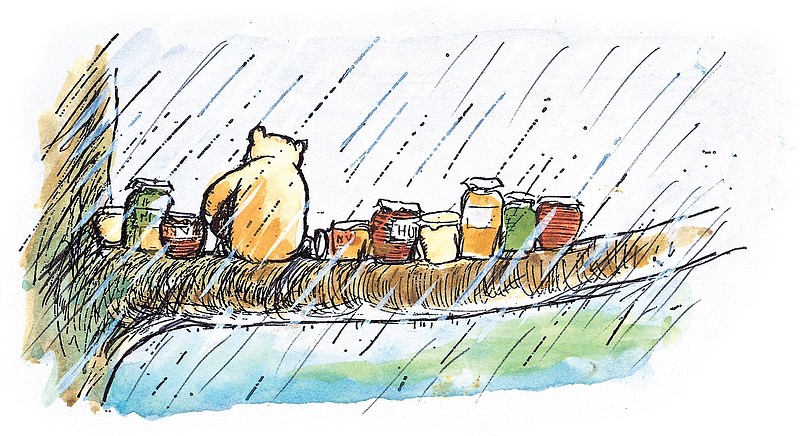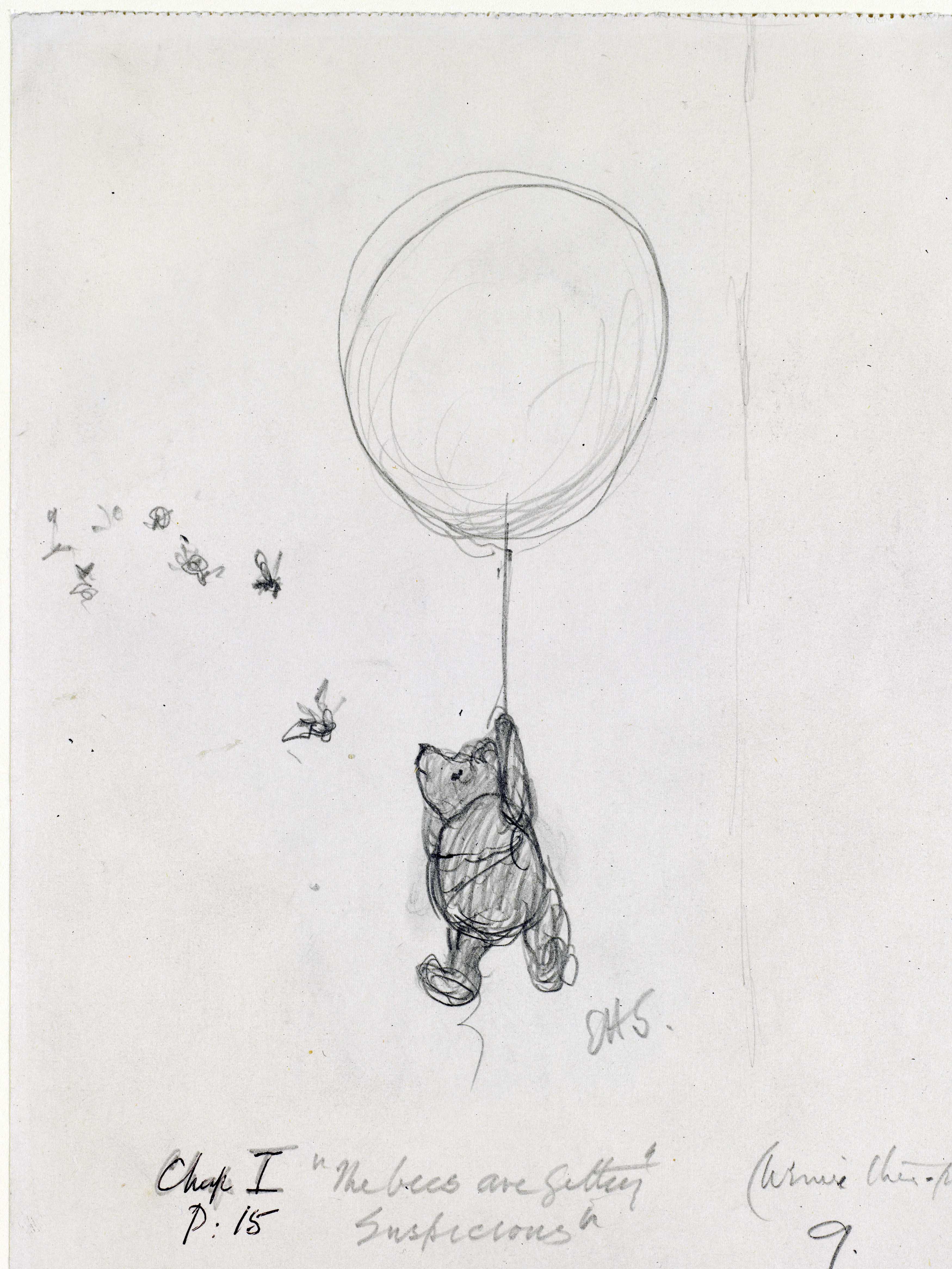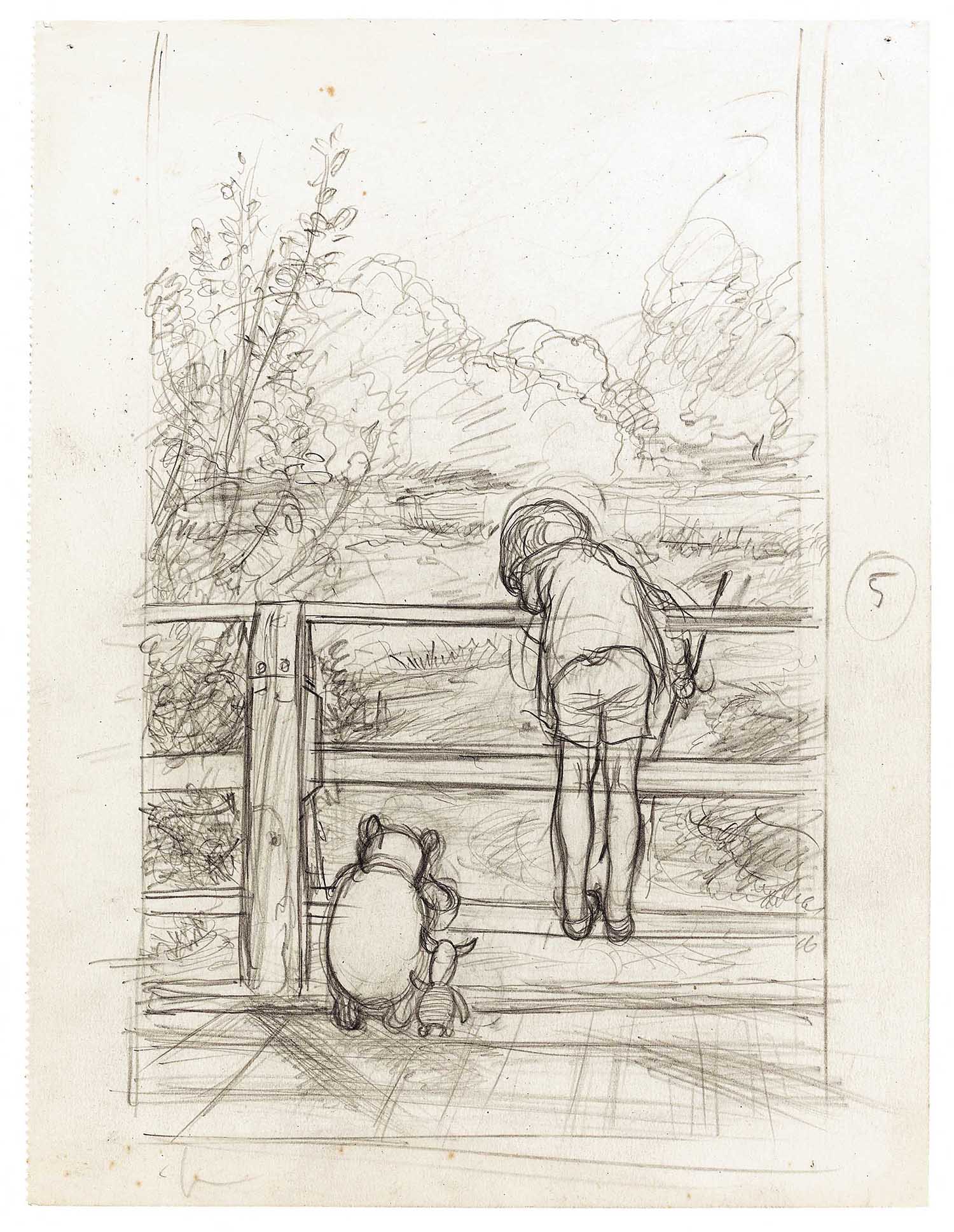Sometimes the smallest things take up the most room in your heart. So it is with Winnie the Pooh. The befuddled bear's (mis)adventures have captured the hearts of people of all ages and sizes since he made his way from the Hundred Acre Wood onto the page in 1926 (or 1925, depending on which side of the ocean you are on).
To help you prepare for Disney's "Christoper Robin," you might consider taking a trip to the High Museum of Art in Atlanta, where you'll find the band of characters in an exhibit that tells the whole story - the real story - of how a silly little bear came to be such a big icon.
Though you won't see the original hand-drawn map of the Hundred Acre Wood, which trotted off to break auction records last month, the exhibit includes a number of E.H. Shepard's drawings of the wood's well-known residents and the very real boy, in a manner of speaking, who befriended them. Tucked in among the illustrations and accompanying manuscripts by author A.A. Milne are photographs of Milne, his son, Christopher Robin, and the well-loved stuffed animals whose shared adventures in the wooded acres of Ashdown Forest surrounding their home inspired the famed fictional tales. Hand-written letters help tell the story of Milne and the bear he brought to life to give a never-ending face to childhood.
All told, there are 200 works in the exhibit, which is a very big number indeed considering this is their first time appearing together in the U.S.
"This exhibition brings together the most important objects in Pooh history to reveal why the lovable bear and his friends remain so compelling today," says Virginia Sweeney, the High's co-presenting curator for the exhibition.
And, in the words of Pooh himself, "Poetry and hums aren't things which you get, they're things which get you. And all you can do is to go where they can find you."
If you go:
“Winnie-the-Pooh: Exploring a Classic” is on display at the High Museum through Sept. 2, but there are some other special dates to keep in mind.Saturdays and Sundays, June 3 — Sept. 2: Every Saturday and Sunday at 1:30 p.m., 2:30 p.m. and 3:30 p.m., you can join for story time in the lobby of the Anne Cox Chambers Wing. Each day features a chapter from A.A. Milne’s “Winnie-the-Pooh” or “The House at Pooh Corner.”Aug. 12: On the second Sunday of each month from noon to 5 p.m., the High offers free admission for all visitors, and special family-friendly programming from 1-4 p.m. for free. Activities include Winnie-the-Pooh-themed art-making workshops and Tales & Tails interactive story times.


